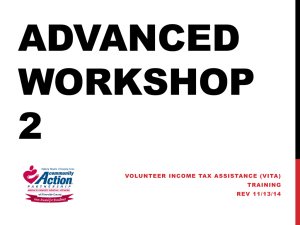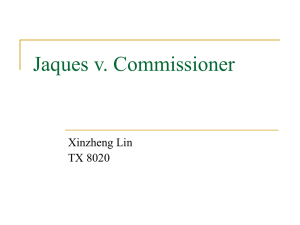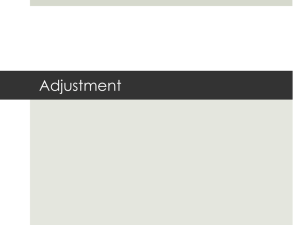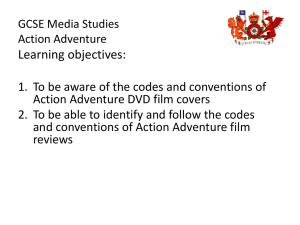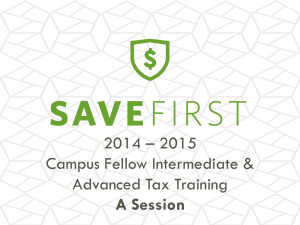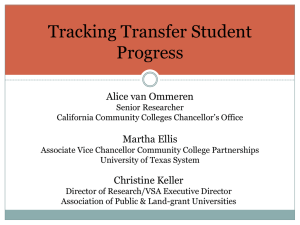Volunteer Advanced Training 1 - Community Action Partnership
advertisement
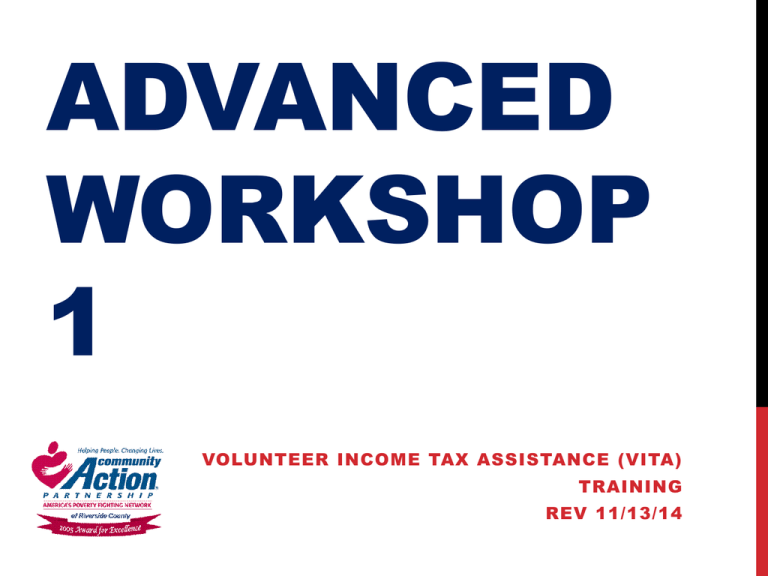
ADVANCED WORKSHOP 1 VOLUNTEER INCOME TAX ASSISTANCE (VITA) TRAINING REV 11/13/14 ICEBREAKER Turn to the person to the right Introduce Yourself Tell them one thing you want to gain out of this volunteer experience WHAT IS CAP RIVERSIDE? Community Action Agencies signed into effect 1964 Economic Opportunity Act by Lyndon B. Johnson, in an effort to end poverty. Community Action Partnership of Riverside County (CAP Riverside) was founded in 1980. We perform community needs assessment to identify agency target programs, we offer utility assistance, weatherization, disaster relief, notaries, free tax preparation, dispute/conflict resolution, individual development accounts, and youth programs. WHAT IS VITA? EITC? Found in 1971, by Gary Iskowitz at Cal State Northridge, Volunteer Income Tax Assistance (VITA) Program is a free alternative to tax preparation, which is operated by volunteers. Earned Income Tax Credit (EITC) is a refundable tax credit for working families. Enacted in 1975 under the Gerald Ford Administration. CAP RIVERSIDE VITA CAP Riverside has completed 20,000 returns since 2005, last year 162 volunteers completed 3,405 returns, bringing $4.3 million federal dollars to taxpayers. VOLUNTEER EXPECTATIONS Commit to attending workshops to desired certification level (Basic, Advanced, Site Coordinator) Training takes place in November, December and January • Basic requires 2 workshops (plus 1 Software Training) • Advanced (Returners) requires 2 workshops • Site Coordinator requires 1 workshop Minimum hours required is 30 hours at 23 locations throughout Riverside County, January-April 15 Educate friends and family on the EITC WHAT DO YOU GET? FREE Training and first hand knowledge of the tax code and learn how to prepare a tax return Direct impact in the community, you are 1 of the 1000’s across the country doing this work Help bring missed dollars back into the local economy CAP Riverside provides certificates, references, and letters of recommendation (individuals who surpass minimum hours) RESOURCES FREE workshops Pub 4012 – Resource Guide In-scope chart in Pub 4012 • Do not prepare a return that you are not certified to prepare, this will void the coverage under the Volunteer Protection Act 1997 Pub. 17 – Reference Manual Site Coordinator VITA Hotline 1-800-829-8482 Taxwise Hotline 1-800-411-6391 SITE ROLES Interview/Intake (STD) • Verifies taxpayer qualifies for VITA services. Tax preparer (Basic or ADV) • Processes tax documents provided by taxpayer. Quality Reviewer (ADV) • Assesses prepared return for errors and accuracy. Exit Interview (STD) • Final process, in which taxpayer receives prepared turn. Site Coordinator (ADV) • Responsible for coordination of site level policies and procedures. VOLUNTEER PROCESS Visit capriverside.org and go to Volunteer Income Tax Assistance Complete Training and Certify by January 24th Complete Live Scan application and schedule appointment prior to January 24th (Returners are exempt) Maintain communication, hours, and scheduling commitments To receive Presidential Volunteer Service Award • • Group must complete 200 hours Community volunteers must complete 100 hours CERTIFICATION Workshops (November-December) Basic Workshops (2) • Software Training (1) Advanced Workshops (2) Site Coordinator Workshops (1) Access www.linklearncertification.com Create your own account Group: “VITA Volunteer”, “Quality Reviewer”, “Site Coordinator Training Source: “Link & Learn Taxes” Quick Links: Practice Lab password is “learntwo” ADVANCED CERTIFICATION Advanced Workshops Adds self employment income, IRA deduction, more detail on pension benefit options, sale of stock or a home, repayment of 1st time home buyers credit, etc. (everything within VITA scope). QUESTIONS STANDARDS OF CONDUCT 1. I will follow the Quality Site Requirements (QSR). a. 2. 3. 4. 5. 6. Certification, Intake/Interview Process, Quality Review Process, Reference Materials, Volunteer Agreement, Timely Filing, Title VI “Civil Rights”, Site Identification Number, EFIN, Security Privacy and Confidentiality I will not accept payment or solicit donations for federal or state tax return preparation. I will not solicit business from taxpayers I assist or use the knowledge I gained about them (their information) for any direct or indirect personal benefit for me or any other specific individual. I will not knowingly prepare false returns. I will not engage in criminal, infamous, dishonest, notoriously disgraceful conduct, or any other conduct deemed to have a negative effect on the VITA/TCE Programs. I will treat all taxpayers in a professional, courteous, and respectful manner. REVIEWING INTAKE SHEET More clarification was provided on Part II Single (this includes registered domestic partnerships, civil unions, or other formal relationships under state law) Married Was your marriage recognized under the laws of the state you’re filing in? REVIEWING INTAKE SHEET REVIEWING INTAKE SHEET Healthcare Coverage change* QUESTIONS LOGGING INTO PRACTICE LAB www.linklearncertification.com Practice Lab • Password= learntwo • Create Username & Password and store on your 4012 LOGGING INTO TAXWISE ONLINE • TWOnline Need these items to login: Site Client Number, Username, and Password. TAX PREPARATION • Input same SSN twice, brings you to Main Info. Screen TAX PREPARATION (1099R) •Social Security, annuities, retirement or profit sharing plans, insurance contracts, IRAs, etc •Taxable portion reported in box 2a of Form 1099-R •If no amount reported in box 2a, we need to compute the taxable amount (Advanced Only) • If the taxpayer made all contributions to the plan with before tax dollars, the entire distribution is taxable income (typical 401K plan). • If the taxpayer made contributions with after tax dollars, only the earnings/investment gain will be taxed • Rollovers within 60 days from one retirement account to another are not taxable TAX PREPARATION (IRA) Calculating the Taxable Portion of Pensions and Annuities •Box 7 of Form 1099-R is left unchecked •Unless an exception applies (which puts return out-of-scope for VITA), use the Simplified Method to determine the taxable portion of annuity payments from a qualified plan •The number of payments is based on the taxpayer’s age (and the spouse’s age if a joint/survivor annuity) at the time of the first monthly distribution •Taxpayer’s cost basis is found in Box 9b of Form 1099-R •Taxpayer’s cost basis / number of monthly payments = monthly tax free portion •Determine tax- free amounts from prior years from last year’s worksheet (Simplified Method question 5) TAX PREPARATION (IRA) Premature Distributions: •Early withdrawal from a retirement fund prior to age 59 1⁄2 •Subject to 10% penalty •If distribution code in box 7 of Form 1099-R is a 2, 3, or 4 the taxpayer is not subject to the early distribution penalty •If the distribution code in box 7 of Form 1099-R is 1, the taxpayer is subject to the 10% penalty TAX PREPARATION (IRA) Exception to premature distribution: •Form 5329, Part I •Determine if one of the allowable exceptions applies based on client interview (most common would be unreimbursed medical expenses, health insurance premium while unemployed, education expenses, or first home purchase) TAX PREPARATION (IRA) Required Minimum Distribution: •Box 7 of Form 1099-R is left unchecked •Unless an exception applies (which puts return out-of-scope for VITA), use the Simplified Method to determine the taxable portion of annuity payments from a qualified plan •The number of payments is based on the taxpayer’s age (and the spouse’s age if a joint/survivor annuity) at the time of the first monthly distribution •Taxpayer’s cost basis is found in Box 9b of Form 1099-R •Taxpayer’s cost basis / number of monthly payments = monthly tax free portion •Determine tax- free amounts from prior years from last year’s worksheet (Simplified Method question 5) TAX PREPARATION (IRA) Withdrawal of Excess IRA Contributions: •Maximum annual contribution is greater of $5,500 ($6,500 if age 50 or older), or taxable compensation for the year •Once identified, excess contribution and earnings on excess must be withdrawn by due date of the return •The withdrawn excess contribution is not included in the taxpayer’s gross income on the return if no deduction was allowed for the excess, and all interest or other income earned on the excess is also withdrawn •If excess amount is not withdrawn on time, taxpayer is subject to an additional 6% penalty tax on the excess amount (refer to professional tax preparer) TAX PREPARATION (IRA) Individual Retirement Arrangements (IRA) •Required Minimum Distribution (RMD) is April 1 of the calendar year following the year in which taxpayer turns 701/2, or retired, whichever is later •Each year thereafter, RMD must be received by 12/31 •If RMD is not taken as required, a tax penalty applies of 50% of the difference between the minimum distribution and the amount actually distributed for the tax year •These rules do not apply to a ROTH IRA QUESTIONS TAX PREPARATION (SCH A) Medical and Dental Expenses • Payments of fees to doctors, dentists, surgeons, chiropractors, psychiatrists, psychologists, and non traditional practitioners CANNOT DEDUCT • Funeral expenses • Over the counter medications not prescribed by a physician • Non-qualified organizations • Chambers of Commerce • Civic leagues and associations • Country clubs and other social clubs • Homeowners Association • Labor Unions • Political organizations and candidates TAX PREPARATION (SCH A) Unreimbursed medical and dental expenses - Combination of medical expenses from Schedule A, detail, plus Social Security, if Medical is paid through Social Security. Linking to A Detail Itemized deduction will give access to charitable and medical deductions TAX PREPARATION (SCH A) Remind customers about their ability to take medical miles Medical Expenses are to be listed in “Other medical expenses” TAX PREPARATION (SCH A) Contributions to Charity that exceed 20% of AGI must be listed in each property category. TAX PREPARATION (SCH A) Vehicle Registration TAX PREPARATION (SCH A) CA TAX PREPARATION (SCH A) Using Line 10, will take you to scratchpad QUESTIONS TAX PREPARATION (SCH C) Business vs. Hobby: An activity qualifies as a business if the primary purpose for engaging in the activity is for income or profit and the taxpayer is involved in the activity with continuity and regularity. For example, a sporadic activity or a hobby does not qualify as a business. • • Hobby income is reported on line 21 of 1040, not Schedule C A taxpayer does not have to conduct regular full-time business activities to be self-employed. Having a part time business in addition to a regular job or business may be self-employment. TAX PREPARATION (SCH C) Taxpayers can deduct the costs of running their business. • These costs are known as business expenses. To be deductible, a business expense must be both ordinary and necessary. An ordinary expense is one that is common and accepted in the taxpayer’s industry. A necessary expense is one that is helpful and appropriate for the taxpayer’s trade or business. • Examples: Advertising, Car/Truck expenses, parking & tolls, commission & fees, insurance, legal & professional services, office expense, rent/lease, supplies, taxes & licenses, travel/meals, entertainment, etc TAX PREPARATION (SCH C) Additional Business Travel expenses: •Transportation: air, bus, train, or car between your home and business destination •Taxi, commuter bus, or airport limo fare & tip •Shipping bags •Car rental or mileage rate for personal car •Lodging & meals •Dry cleaning & laundry •Business calls •General rule: can deduct ordinary and necessary expenses to entertain a client, customer, or employee if the expenses meet the directly-related test or associated test •Can deduct only 50% of the unreimbursed entertainment expense •Use Form 2106 to report business expenses, which then transfers the result as a miscellaneous itemized deduction on Schedule A of Form 1040 TAX PREPARATION (SCH C) TAX PREPARATION (SCH C) Schedule C’s We Will Not Prepare at Any Site • Taxpayers with expenses exceeding $25,000. • Taxpayers with inventories. • Taxpayers with employees. • Taxpayers with losses resulting in a net operating loss carryback or carryforward. • Taxpayers other than day care providers claiming an office in home deduction. • Taxpayers other than cash basis. TAX PREPARATION (SCH C) • Business income information comes from the following: • Forms 1099-MISC, Miscellaneous Income, box 7 • Non-employee Compensation • Box 3, Other Income, does not necessarily mean selfemployment income • Taxable, but not self-employment taxable, link to 1040 not Sch C. • Taxpayer’s books and records • Self Organizer • Caution: In your interview ask about other income not included on Form 1099-MISC • Cash income TAX PREPARATION (SCH C) • 1099 Misc TAX PREPARATION (SCH C) Self-Employed Test: Tim works as an independent contractor for ABC Construction Company. The company sent Tim a Form 1099-MISC that shows he received $15,000 for the work he did for them. He also received cash payments of $4,000 from several different individuals for the work he completed. He did not receive Forms 1099-MISC for the $4,000. Does Tim have to include the $4,000 cash payments as self-employment income along with the $15,000 from Form 1099-MISC? TAX PREPARATION (SCH C) Home – place where you reside Regular or main job – Principal place of business Temporary work location – A place where your work assignment is realistically expected Second Job – From one workplace to another TAX PREPARATION (SCH C) Principal Business and Business Code: For consistency, please use the following business titles and code for our most common business types: • Child Day Care 624410 • Home Health Care 621610 • Personal Service 812990 • Beauty Salon 812112 • Janitorial Services 561720 • For other businesses please try to identify the proper business code , use 99999 rarely. • Press F1 from TWO to obtain business code TAX PREPARATION (SCH CEZ) • As a general rule business expenses are the ordinary and necessary expenses incurred in carrying on a trade or business. • Automobile expenses–Most taxpayers elect to use the standard mileage rate for business miles (commuting and personal miles do not count) plus parking and tolls while on business TAX PREPARATION (SCH C) • Open a new Sch C • Make sure that the correct entry is made for Taxpayer or Spouse at the top of the form. • Complete entries A and B. Business Codes can be obtained by pressing F1 when on the Schedule C-EZ or C in TaxWise. • Complete entries C and D only if required. • Complete entries E, F, G and H QUESTIONS TAX PREPARATION (SCH D) Capital Gains and Losses: Proceeds from Sale – Gross or net proceeds from the sale of stock or mutual fund is reported to taxpayer on Form 1099 B or on a 1099 Consolidated Statement How to record on Schedule D ?– First need to determine the “basis” and the “holding period” TAX PREPARATION (SCH D) Capital Gains and Losses: TAX PREPARATION (SCH D) • Original cost of the asset, adjusted for commissions • The basis for stock received as a gift or inheritance is Fair Market Value at the time it was received by taxpayer (will discuss exception for 2010 later) •If the taxpayer cannot provide the basis, the IRS will assume $0 • Dividends of stock in lieu of cash increase taxpayer’s ownership so original basis is spread over more shares…thus reducing effective basis •Stock splits reduce original basis (e.g. 2 for 1 = 50%) TAX PREPARATION (SCH D) EXAMPLE: Alice paid $1,100 for 100 shares of ABC, Inc. stock (which included the broker’s commission of $25).The original basis per share was $11 ($1,100 ÷ 100). She received 10 additional shares as a tax-free stock dividend. Her $1,100 basis must be allocated to the 110 shares (100 original shares plus the 10-share stock dividend). This results in an adjusted basis of $10 per share ($1,100 ÷ 110). TAX PREPARATION (SCH D) •Short-term property is held one year or less •Long-term property is held more than one year, and is taxed at a lower rate that short term gains •Inherited stock is always treated as long-term property (see exception for 2010 discussed next) •Using cash dividends to purchase additional shares of stock simply adds new stock with it’s own separate basis and holding period TAX PREPARATION (SCH D) •Repeal of estate tax for decedents dying after 12/31/2009 and before 1/1/2011 •Automatic long term holding period does not apply to inherited stock •If taxpayer sells property inherited from someone who died in 2010, refer the taxpayer to a professional tax preparer TAX PREPARATION (SCH D) How to Report: • Reported to taxpayer on Form 1099-B or on a Consolidated Statement • Form 1099-S usually reflects gross proceeds of real estate transactions • Refer to Volunteer Resource Guide D 13 to see how to enter on Schedule D • If box 5, 10, 11,12, 13, or 14 has an entry, refer the taxpayer to a professional tax preparer. These boxes provide information about wash sales, regulated futures contracts, and bartering, which are out of scope TAX PREPARATION (SCH D) Capital Gain/Loss Example: Lenny bought 500 shares of XYZ Corporation stock for $1,500, including his broker’s commission. Five years later, XYZ distributed a 2% nontaxable stock dividend (10 shares). Three days after the stock dividend was distributed, Lenny sold all his XYZ stock for $2,030. Although Lenny owned the 10 shares for only three days, all the stock has a long-term holding period. Stock acquired as a nontaxable stock dividend has the same holding period as the original stock owned. Because he bought the stock for $1,500 and then sold it for $2,030 more than a year later, Lenny has a long-term capital gain of $530 on the sale of his 510 shares. TAX PREPARATION (SCH D) Capital Gain/Loss Example: Margo bought stock for $1,500, plus a $25 commission; 18 months later she sold all the stock for $2,000 and paid a $25 commission. Her Form 1099-B shows the gross proceeds of $2,000 as the sales price. Basis = ($1,500 + $25 + $25) = $1,550 Sales Price = $2,000 Gain or Loss = Sales Price – Basis = $2,000 – $1,550 = $450 Margo had a long-term gain of $450. TAX PREPARATION (SCH D) Capital Gain/Loss Example: Margo bought stock for $1,500, plus a $25 commission; 18 months later she sold all the stock for $2,000 and paid a $25 commission. Her Form 1099-B shows the gross proceeds of $2,000 as the sales price. Basis = ($1,500 + $25 + $25) = $1,550 Sales Price = $2,000 Gain or Loss = Sales Price – Basis = $2,000 – $1,550 = $450 Margo had a long-term gain of $450. TAX PREPARATION (SCH D) •A mutual fund is a regulated investment company •Owners of mutual funds may receive both a 1099-DIV and 1099-B •Form 1099-DIV: reports capital gain distributions from sales of stock held by the mutual fund, and is then reported on Form 1040, Schedule B •Form 1099-B: reports the taxpayer’s sale of any of their shares in the mutual fund itself. The taxable gain or loss from the sale or exchange of the taxpayer’s share in the mutual fund is reported on Form 1040, Schedule D TAX PREPARATION (SCH D) Capital Loss Carryover: •Taxpayer’s cannot take loss of more than $3,000 in any one year ($1,500 for married filing separately) •Unused losses can be carried over to later years until completely used •Carryover losses are combined with gains in that year •Short –term losses offset short-term gains •Long –term losses offset long term gains TAX PREPARATION (SCH D) Prior Year Capital Loss Carryover: To take credit this year for carryover loss from prior year, use Capital Loss Carryover Worksheet from Schedule D (will also need the Schedule D Worksheet from prior year return to confirm loss carry forward) •Short-term capital loss carryover (from Schedule D Worksheet 2, Line 8) goes to Schedule D, Part I, Line 6 •Long-term capital loss carryover (from Schedule D Worksheet 2, Line 14) goes to Schedule D, Part II, Line 14 TAX PREPARATION (SCH D) Form 8949 and Schedule D: NEW In 2013, Line 1 and Line 8 of the Schedule D now divided to allow for entry of short and long term transactions where the basis was reported to the IRS. However, can still use 8949 for all transactions if client has a combination of reported and non-reported sales. All other transactions are reported using Form 8949, Sales and Other Dispositions of Capital Assets. TAX PREPARATION (SCH D) Capital Gain/Loss from Home Sale: •If main home (owned and used by the taxpayer for 2 of the 5 years prior to sale), then $250,000 of gain is non-taxable for Individual taxpayers and $500,00 for Married Filing Jointly •Amount realized = sales price – selling expenses •Adjusted Basis = purchase price + additions improvements with a useful life of more than one year •Gain/Loss = amount realized – adjusted basis •A gain is reported on Schedule D. Losses are not deductible. •A gain from the sale of home that is not a main home is reported as taxable income (Schedule D) TAX PREPARATION (COD) Cancellation of Debt •Most frequently involves auto loans, credit cards, medical expenses, professional services, installment payments on furniture, etc. When a debt is forgiven, the taxpayer receives a Form 1099-C, Cancellation of Debt and must report the amount as income on Line 21 of Form 1040 •Mortgage Forgiveness Debt relief Act of 2007 – taxpayers may exclude debt forgiven or cancelled on their principal residence. •Foreclosure– Form 1099-A, Acquisition or Abandonment of Secured Property—used to determine gain/loss •Other exclusions also apply e.g. discharge of dept through bankruptcy or insolvency but these are outside VITA scope TAX PREPARATION (COD) Cancellation of Debt TAX PREPARATION (COD) Cancellation of Debt Form 982 TAX PREPARATION (COD) Cancellation of Debt Form 982 NEXT TRAINING: Schedule E K-1 Foreign Tax Credit Residential Energy Credit Repayment of 1st Time Homebuyers Credit ACA
